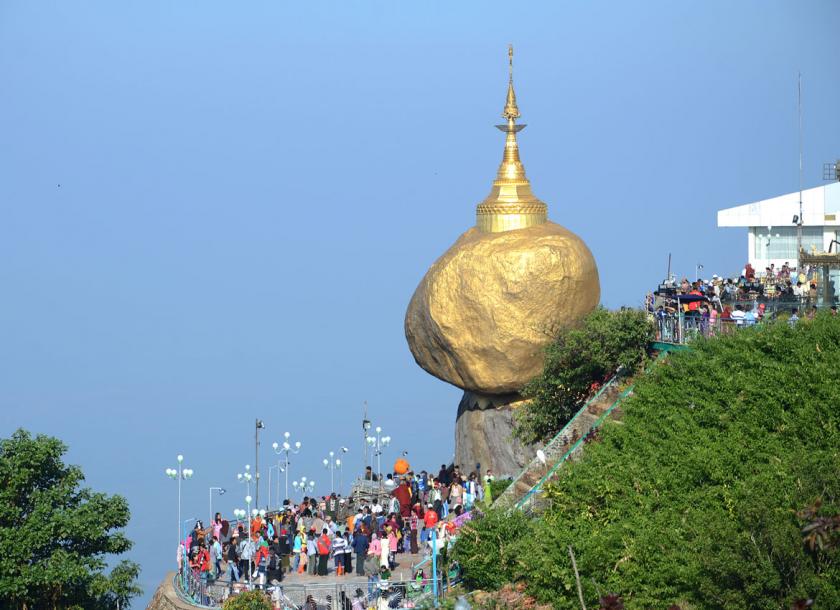Myanmar: Recommendations provided to raise investments in healthcare, tourism
Last week, the European Chamber, together with German development agency GIZ, presented research findings on the barriers to investment and investment promotion in Myanmar’s healthcare and tourism sectors.
With the objective of enhancing the investment environment in Myanmar, the chamber conducted a detailed analysis of Public Private Partnerships (PPP) in the country and provided recommendations driving momentum for policy change and cooperation between the public and private sectors.
In healthcare, research findings and subsequent dialogues revealed the role of the private sector in contributing to reaching the national target of Universal Health Coverage (UHC) by 2021 is not specifically referred to in the country’s National Health Plan 2017-2021.
Furthermore, it noted that there was little sector-wide consultation between the public and private sector. In fact, competition for limited human resources between the two sectors is rife, with foreign and former Myanmar national medical specialists ad doctors currently still barred from entering the country.
Meanwhile, foreign pharmaceutical companies face major barriers to entry and operational setbacks within the country due to stringent processes set by the Food and Drug Administration as well as counterfeit products.
This has all resulted in low confidence in the quality of both public and private healthcare services in Myanmar, leading to an extensive shift in demand for such services overseas.
To be sure, certain subsectors in healthcare have been included in the list of promoted sectors in recent years. This qualifies investors in these sectors to be eligible for tax exemptions for a period of three, five or seven years, depending on the location of the investment.
As a result, the share of private and foreign investments in the healthcare sector has rapidly increased from a low level to nearly the level of spending of the public sector, reflecting the importance of private sector involvement and promotion in healthcare.
Still, the country still suffers from a short life expectancy of 64.7 years and various communicable diseases such as malaria, tuberculosis and HIV/AIDS, which are still prevalent in Myanmar.
Meanwhile, the healthcare sector is also just recovering from a phase of severe public under-investment. Currently, the share of public budget spend on healthcare is just 3.65 percent, the lowest in ASEAN.
As a result, physical health infrastructure remains under-developed and the availability of essential medicines in public hospitals is limited.
In addition, a large proportion of government funding and medical resources have also been predominantly centered in the Yangon – Nay Pyi Taw – Mandalay corridor, neglecting the rest of the nation.
Given the current environment, the role of the private sector should be enhanced and preparation of a targeted investment promotion strategy in the Myanmar healthcare sector is urgently needed, the chamber said.
Tourism strategy
Foreign investments in Myanmar’s tourism sector have improved significantly, with state and region governments now able to approve projects involving investments of less than $5 million under the New Investment Law and the only activity explicitly off limits to foreign investors being tour guide services.
Nevertheless, foreign investors still report a lack of clear guidelines and procedures. Many of the instructions and requirements they receive are verbal or unwritten, which can change depending on the official involved. Meanwhile, projects that require the consent of multiple ministries are often difficult because of a lack of coordination and collaboration between departments.
The other barrier is poor transport infrastructure. Beach resorts are growing fast but are hard to access due to poor road conditions. The majority of the potential ecotourism sites are in remote areas with poor transport infrastructure and attract virtually no international visitors.
Internal flights are also expensive, leading to majority of international tourists visiting the same destinations: Yangon, Bagan, Mandalay, Inle Lake and Kyaiktiyo (Golden Rock).
Also, most foreign direct investments (FDI) have been directed into hotels. Approved FDI in hotels and tourism hit $400 million in the 2016-17 fiscal year and actual FDI was $116 million, according to the Directorate of Company Administration.
In most cases though, there is a lack of coordination and capacity to develop ecotourism and prevent inappropriate developments or projects. This is evident in the Myeik Archipelago, where concessions and ventures have been approved with little thought to sustainability, and at sites like Inle Lake, where sanitation and water supply are under severe strain.
As such, a new tourism master plan, with a clear Tourism Promotion Strategy and sufficient amount of funding to attract a critical mass of tourists is urgently needed.
The Myanmar tourism industry is also in a great need of a revised tourism law as well as functional PPPs backed by sufficient capacity, skill and coordination at the government level in assessing potential projects, the dialogues revealed.
Source: https://www.mmtimes.com/news/recommendations-provided-raise-investments-healthcare-tourism.html


 English
English




